ANIMALS
The Golden Palm Weaver is a Distinctive Bird Adorned with a Brilliant Yellow-orange Hue That Captivates All Who Behold It
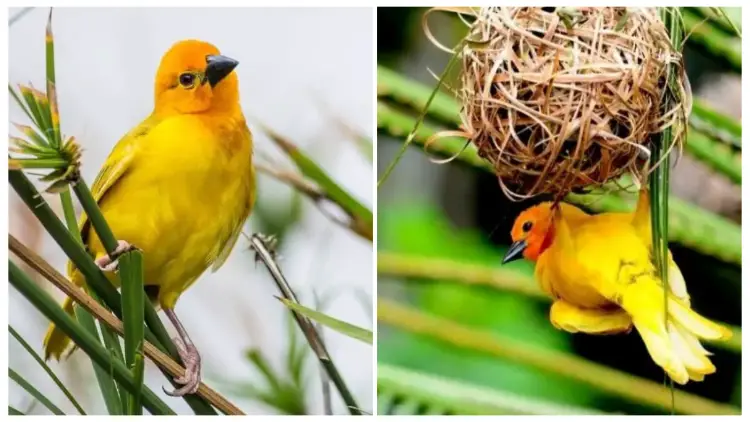
Among birds, some are designed to blend with the environment, while some are outstanding, which makes the diversity of the wildlife. Mother nature selects the most magnificent creatures gifted to soar in the sky. One of them is the golden palm weaver (Ploceus bojeri), a bird looking like a gleaming sunlight ray while gliding.
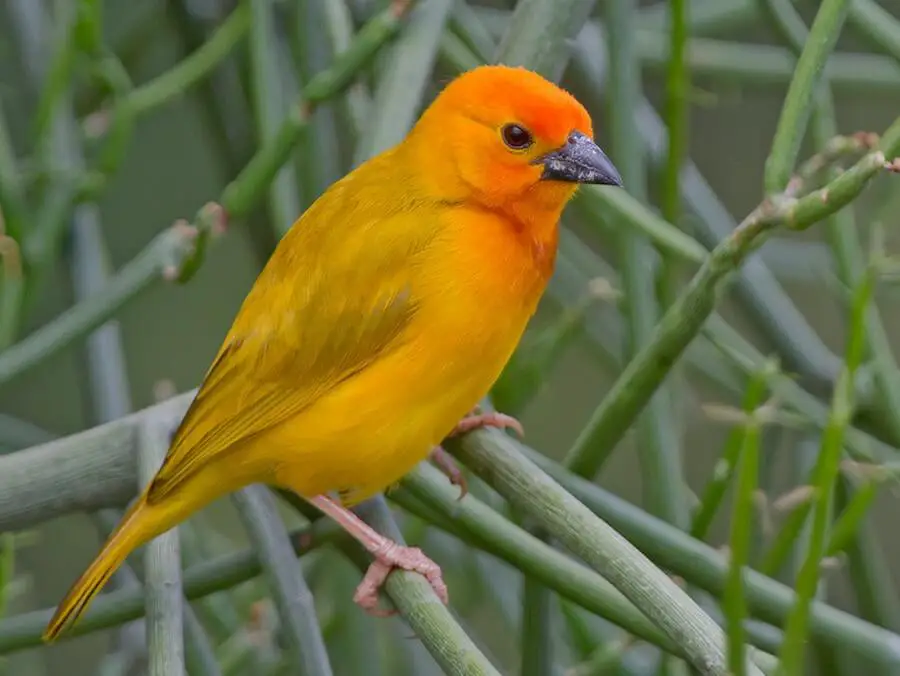 Source: Maurizio Ravasini, Meru NP, Eastern, Kenya
Source: Maurizio Ravasini, Meru NP, Eastern, Kenya
This bird is a common weaver of the coastal palms in East Africa, from Kenya to Ethiopia. It s found in coastal savanna and scrub, often in areas with abundant palms and inland along rivers through the dry country.
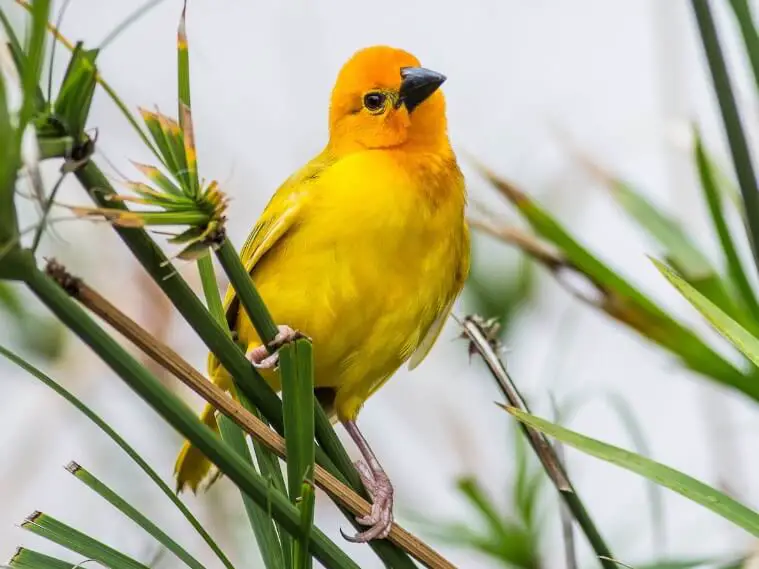 Source: Antero Topp, Bamburi/Mombasa North Beach, Coast, Kenya
Source: Antero Topp, Bamburi/Mombasa North Beach, Coast, Kenya
The breeding male is bright yellow with a mostly orange head. The female is duller, though still very yellow. Both sexes show a dark eye in all plumages.
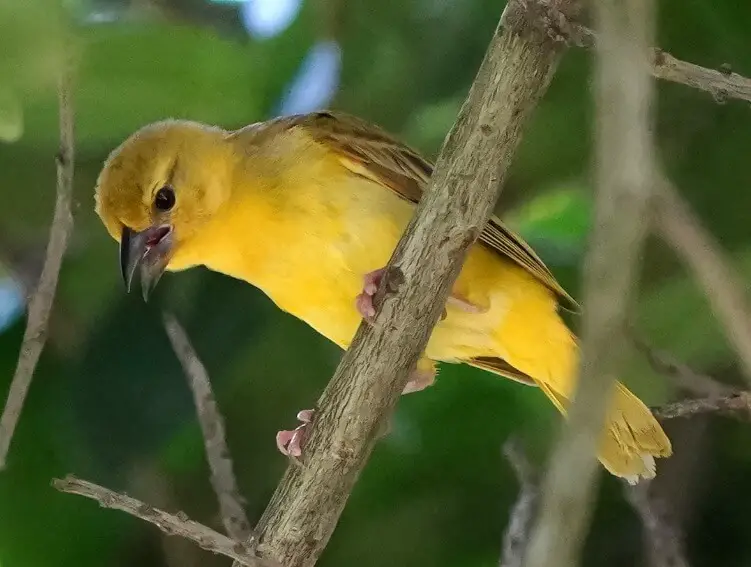 Female Source: Laurent Esselen, Bamburi, Baobab Road, Muyuni, Coast, Kenya
Female Source: Laurent Esselen, Bamburi, Baobab Road, Muyuni, Coast, Kenya
 Source: Megan Perkins, Watamu, Coast, Kenya
Source: Megan Perkins, Watamu, Coast, Kenya
The Golden Palm Weaver is gregarious and roosts in flocks when not breeding. Their vocalizations are typical of weavers: high-pitched “cheeep” notes and a sizzling “radio static” song. They feed on seeds and insects.
 Source: James Kashangaki, Turtle Bay Beach Club, Coast, Kenya
Source: James Kashangaki, Turtle Bay Beach Club, Coast, Kenya
Their nests built by both sexes are usually suspended low under palm fronds or over water in thorn trees. The male displays while hanging below the nest entrance, with his wings spread vertically, but his wings usually move very little, and he may bow slowly.
 Source: Tom Kennedy, Watamu, Coast, Kenya
Source: Tom Kennedy, Watamu, Coast, Kenya
 Source: Jacques Erard, Arabuko-Sokoke Forest NR, Coast, Kenya
Source: Jacques Erard, Arabuko-Sokoke Forest NR, Coast, Kenya
After mating, the female often lays two eggs. Incubation and nestling care are known little.
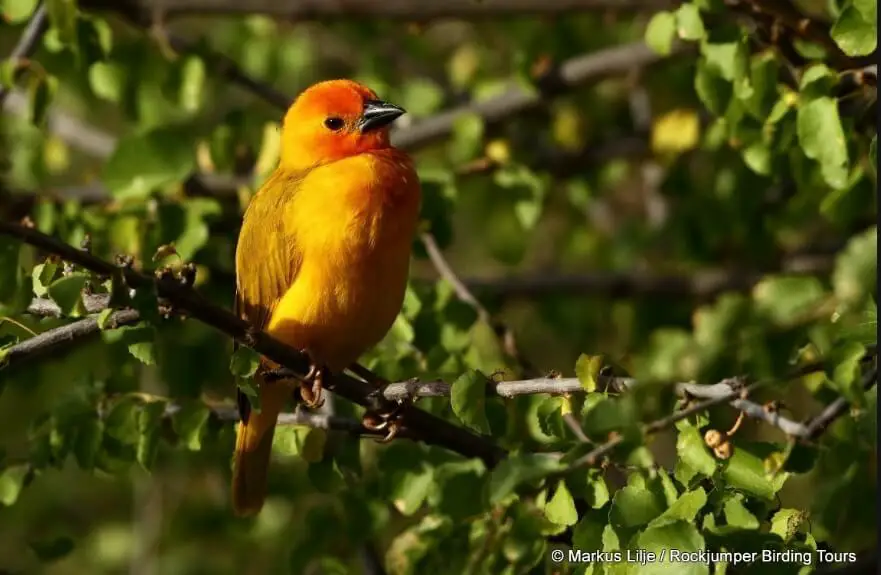 Source: Markus Lilje, Buffalo Springs NR, Eastern, Kenya
Source: Markus Lilje, Buffalo Springs NR, Eastern, Kenya
IUCN Red List classifies the golden palm weaver as of Least Concern. Even though its population isn’t counted precisely, it’s believed to be stable.
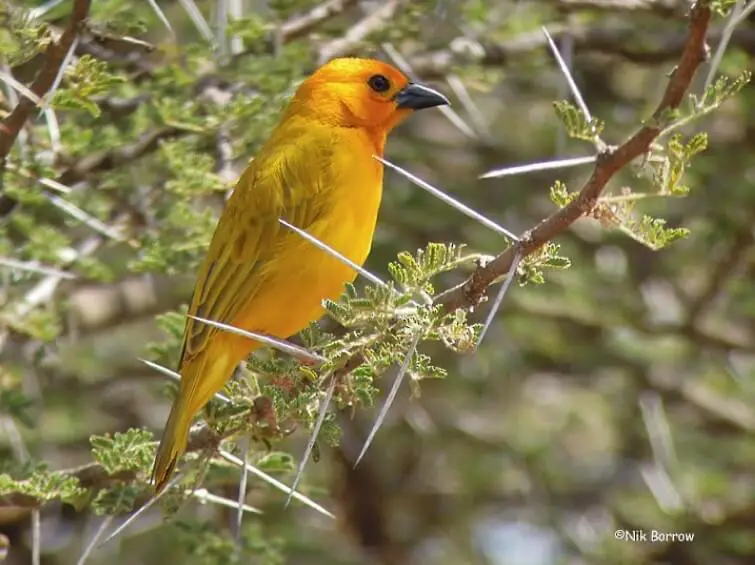 Source: Nik Borrow, Buffalo Springs NR, Eastern, Kenya
Source: Nik Borrow, Buffalo Springs NR, Eastern, Kenya
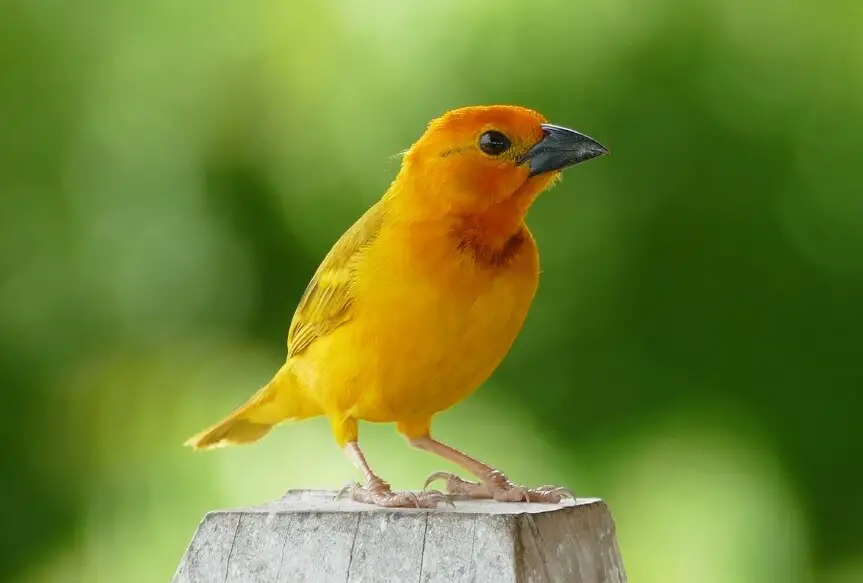 Source: Peter Kaestner, Majlis, Coast, Kenya
Source: Peter Kaestner, Majlis, Coast, Kenya
If you like these lemon-like feathered guys, please like and share this post and comment about them below! In case you’re still in the mood for more exploration, check out some more pieces recommended on your right side!
ANIMALS
Amazing Video of Unseen Ocean Creatures in the Ningaloo Canyons

The Schmidt Ocean Institute recently explored the Ningaloo Canyons on the western coast of Australia using a robotic underwater vehicle called the ROV Sebastian. Check out the amazing video of what they discovered in the deep parts of the Indian Ocean.
More info: Youtube




ANIMALS
These Pics Are Art and the Artists Are Insects

Flying insects move so quickly that they are hard to follow, but new technology and some smart ideas have helped Spanish photographer Xavi Bou do just that. After spending 10 years focusing on birds in flight for his Ornithographies project, he turned his attention to insects.
For Entomographies, he uses high-speed video footage taken by Adrian Smith, an insect expert at North Carolina State University, to study and record how insects move. Bou then picks multiple frames and combines them into single images that show the fast movements of one or more insects through space and time.
With Smith’s help, Bou has captured the aerial tricks of wasps, the jumps of leafhoppers, and the fluttering of butterflies in amazing detail. He hopes that by doing this, he can make people more aware of the decline in important insect populations around the world.
1. Zebra longwing
This butterfly, which is common in many areas of the Americas, really fits its name. It can fly very high with just a few flaps of its large wings.
 Image source: nationalgeographic
Image source: nationalgeographic
2. Two-lined spittlebug
This insect, which comes from the eastern United States, is often seen as a pest because it likes to eat grass. Its springy back legs can make it jump into the air like a rocket.
 Image source: nationalgeographic
Image source: nationalgeographic
3. Yellow-collared scape moth
Unlike most moths, this North American species flies during the day. Its shiny blue-black wings sparkle in the sunlight.
 Image source: nationalgeographic
Image source: nationalgeographic
4. Ailanthus webworm moths
These tropical moths have spread farther north in the U.S. Because of their larval host, the invasive tree of heaven, they are now one of the most common backyard moths in the country.
 Image source: nationalgeographic
Image source: nationalgeographic
5. Common stonefly
Mostly found in eastern North America, this insect starts its life as an underwater nymph in forested streams or rivers. Then it leaves the water, sheds its skin, and becomes an adult with wings.
 Image source: nationalgeographic
Image source: nationalgeographic
6. Green lacewings
Eighty-seven species of this insect have been found in the U.S. and Canada. Since they eat a lot of unwanted plant pests like aphids and mites, they are often used to naturally control these pests.
 Image source: nationalgeographic
Image source: nationalgeographic
7. Grapevine beetle
This insect, fittingly named, eats the leaves and fruit of grapevines, both wild and farmed, but it doesn’t do much damage to the plants. As a type of scarab beetle, it often flies in a curved path.
 Image source: nationalgeographic
Image source: nationalgeographic
8. Oak treehopper and green treehopper
Treehoppers are known for their uniquely shaped pronotum, the part behind their head, which often looks like plant parts to hide from predators. They can jump well thanks to special muscles.
 Image source: nationalgeographic
Image source: nationalgeographic
9. Banded orange
This brightly colored butterfly can be found from Mexico to Brazil. Before mating season, male butterflies look for mineral salts, sometimes even drinking salty fluids from the skin, eyes, and nostrils of other animals.
 Image source: nationalgeographic
Image source: nationalgeographic
10. Sapho longwing
Longwings can live for 6 to 7 months, longer than most butterflies. This type, found from Mexico to Ecuador, has shiny blue wings, which is why it’s also called the Sapphire longwing.
 Image source: nationalgeographic
Image source: nationalgeographic
ANIMALS
Eagle and Fox in an Epic Midair Battle Over a Rabbit, Were Captured by a Photographer

Wildlife photography often depends on the perfect combination of good timing and the right place.
That’s exactly what happened when Kevin Ebi, an experienced wildlife photographer, captured an incredible battle between a bald eagle and a red fox, both competing for a rabbit meal.
In a detailed blog post, Ebi shares the fascinating series of events that unfolded while he was photographing foxes in San Juan Island National Historical Park, located in Washington state.
Ebi noticed a lively group of eight fox kits as they began their hunting lessons. Suddenly, they spotted a rabbit, and a thrilling chase ensued. Eventually, one of the foxes emerged as the winner, proudly carrying the rabbit across the field.
 Image source: Kevin Ebi
Image source: Kevin Ebi
Ebi shares what happened at that moment: “As I followed the fox with my camera, a sudden bald eagle cry caught my attention. It was swiftly approaching, clearly aiming for the rabbit. I quickly focused on the fox, anticipating a quick turnover of events.”
To Ebi’s astonishment, instead of a quick surrender, the situation turned into a intense fight in the air.
The eagle used its power to lift the fox and rabbit high up in the sky. Even while airborne, the fox attempted to break free by swinging back and forth.
 Image source: Kevin Ebi
Image source: Kevin Ebi
 Image source: Kevin Ebi
Image source: Kevin Ebi
 Image source: Kevin Ebi
Image source: Kevin Ebi
In the end, the eagle moved the rabbit to its other claw, causing the fox to let go. The intense battle came to an end in less than 10 seconds.
 Image source: Kevin Ebi
Image source: Kevin Ebi
For those worried about the fox’s well-being after the fight, Ebi reassures that it was not injured. The fox swiftly bounced back from the encounter and resumed its playful behavior with the other young foxes, showing no visible wounds from the aerial clash.
 Image source: Kevin Ebi
Image source: Kevin Ebi
 Image source: Kevin Ebi
Image source: Kevin Ebi
 Image source: Kevin Ebi
Image source: Kevin Ebi
 Image source: Kevin Ebi
Image source: Kevin Ebi
-

 GARDEN12 tháng ago
GARDEN12 tháng ago4 Easiest Ways to Get Free Plants
-

 GARDEN9 tháng ago
GARDEN9 tháng ago15 Houseplants That Grow Well in Vases with Water
-

 FUNNY12 tháng ago
FUNNY12 tháng ago30 Weirdest Things That People Came Across On The Subway
-

 DIY & CRAFT11 tháng ago
DIY & CRAFT11 tháng ago19 Easy and Creative DIY Ideas to Enhance Front Yard
-

 FUNNY12 tháng ago
FUNNY12 tháng ago30 Funny and Perplexing Photos That Make You Laugh All Day
-

 ANIMALS12 tháng ago
ANIMALS12 tháng agoBritish Angler Caught Huge 67-Pound Goldfish in the World
-

 GARDEN10 tháng ago
GARDEN10 tháng ago30 Shimmering Side Yard Landscape Ideas
-

 FUNNY12 tháng ago
FUNNY12 tháng ago22 Design Fails That Will Make You Laugh Out Loud




